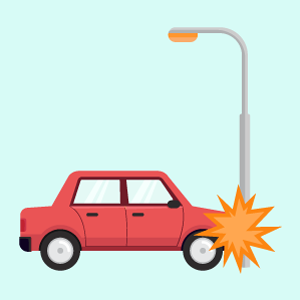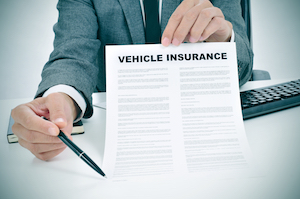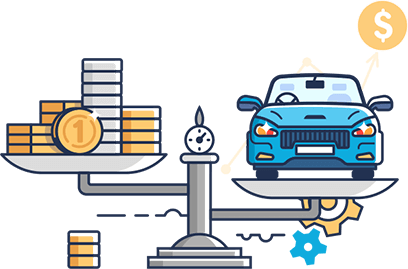It’s time to get a new vehicle, but you have a sneaking suspicion (or you know for a fact) that you owe more on your current vehicle then you’ll get trading it in.
If this is the case, then that changes the equation — and your options moving forward. You need to first calculate your negative equity, then figure out what exactly your options are and what the pros and cons are for each.
In the end, you might decide that it makes more sense to try to sell your car for as much cash as you can get than trade it in to a dealership, where you could get less for your car than it’s really worth.

How To Calculate Your Negative Equity
Calculating your negative equity is pretty simple. The formula is:
(Loan Amount) - (Current Car Value) = Negative Equity Amount.
Figuring out how much you owe left on your loan is simple. Your monthly bills should typically contain that information; if not, you can always contact your lienholder directly.
The real challenge is determining what your car is really worth. The trade-in value a dealership assigns you often doesn’t reflect its true value.
The best way to find out what your car is worth is to use resources like Kelley Blue Book, and look at sales in your area of similar vehicles.
Remember, when calculating your car’s value, to consider the following details:
-
What year, make and model is it?
-
Is there any exterior damage?
-
Is there any interior damage?
-
Does it have all its original parts?
-
What is the current mileage?
-
Is there any existing mechanical damage?
KBB, for example, often provides estimates based on whether a car is in excellent, good, fair or poor condition.
It’s important to be honest when assessing your car’s value — how would a total stranger who is not attached to the vehicle rate its condition?
Once you have a fair estimate of your car’s value, you can subtract it from how much you owe and find out what your negative equity is. (If your car’s value is higher than what you owe, then congratulations — you have positive equity!)
Our expert evaluators can help you get an accurate estimate for your car's value, FAST!

Can I Trade A Car With Debt On It?
Yes, you can. Most dealerships are happy to work with you on that. However, just because you can doesn’t mean you necessarily should.
Trading in a car you still owe money on often means becoming underwater on the loan for your next vehicle. Underwater means, essentially, that you owe more than the car is worth, or you have negative equity.
Dealerships are happy to make this happen because they are interested in the next sale. Whether it’s financially convenient for you is not necessarily relevant to them.
Options For Trading In A Car With Negative Equity
If you have a car with negative equity and you’re looking to trade it in, you have a few options for what to do.
1. Wait Until You’ve Paid It Down
Your first option is to hold off on getting a new vehicle until you’ve caught up on payments and brought your loan amount down to what your vehicle is worth.
Keep in mind that your vehicle will continue depreciating over time, so depending on why and how your loan got to be greater than your vehicle’s value, this may require submitting additional or higher payments above the minimum payment.
After you’ve submitted enough payments to bring the loan down to neutral or positive, you should be good to go for a new loan.
2. Pay Off The Negative Equity Now
If you’re in a rush and you have the cash on hand, your next option is to submit a lump sum payment on your loan to pay it off in one go.
Before you do this, however, read over the terms carefully. Some loans have a penalty for paying it off early. If there is one, you’ll want to make sure your calculations and budget take that penalty amount into account.
Once you’ve submitted the lump sum payment to bring your equity down to even (or positive), you can work on trading in your car.

3. Roll The Negative Equity Over
You can’t (or don’t want to) wait, and you don’t have the cash on hand for a lump sum payment. Your final option is to roll the negative equity over into your new loan. How does this work?
Let’s say your car is valued at $7,000 because it was damaged, but your loan is $15,000. You want to buy a vehicle worth $18,000.
You turn in your car and get $7,000 as the trade-in value. The remaining $8,000 you owe is rolled over into your new loan.
If you hadn’t rolled over negative equity, you would have a new loan for $11,000 and a car worth $18,000. But you rolled over an additional $8,000 that you owe — and now your loan is $19,000 on a car worth $18,000.
Normally, the benefit of trading in a vehicle is being able to finance a smaller portion of your vehicle’s total cost to reduce your monthly payments. If you are upside down, however, you’re doing the opposite.
The Alternative Option: Sell Your Car For Cash Now
This option is not always available — it depends on how much you owe for your car and how much you can get for it in the market. But rather than trading your car in to a dealership, you may be able to sell it directly to a buyer that will pay a fair market price for it.
Caveats to this: if you owe significantly more than your car is worth, then chances are you will simply not be able to find a buyer willing to pay you what the loan is worth.
But if your loan amount is not too far from your car’s value and you think the dealer is underestimating your car’s value, you can sell it instead.
How To Sell A Car You Still Owe Money On
CarBrain can buy cars with negative equity under certain conditions, and our file managers are always ready to help you find out if you qualify.
It couldn’t be easier to get an offer from CarBrain and sell your car. It’s just three steps:
-
Get an offer and accept it, if you like it.
-
Schedule your payment and pickup!
-
Hand over the keys and collect your check!
We’re ready to help you at 1-877-877-7911 or through chat. Just reach out and talk to a CarBrain representative today — we buy less-than-perfect cars!



